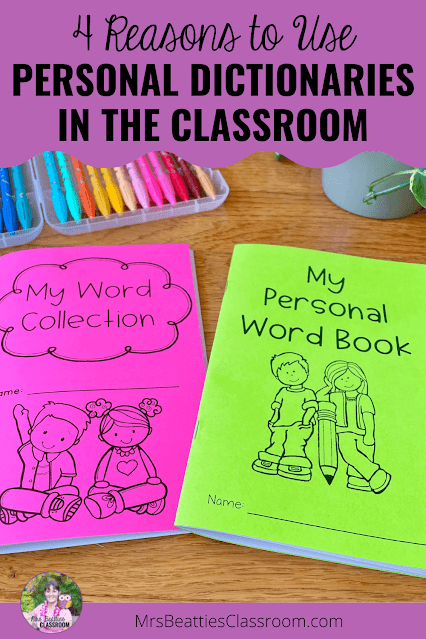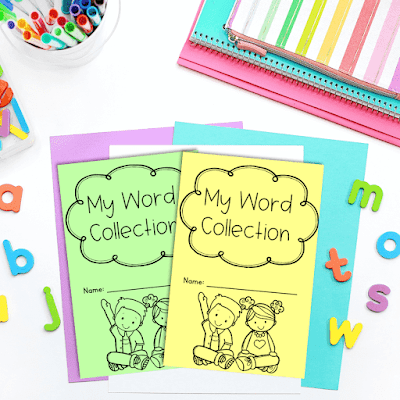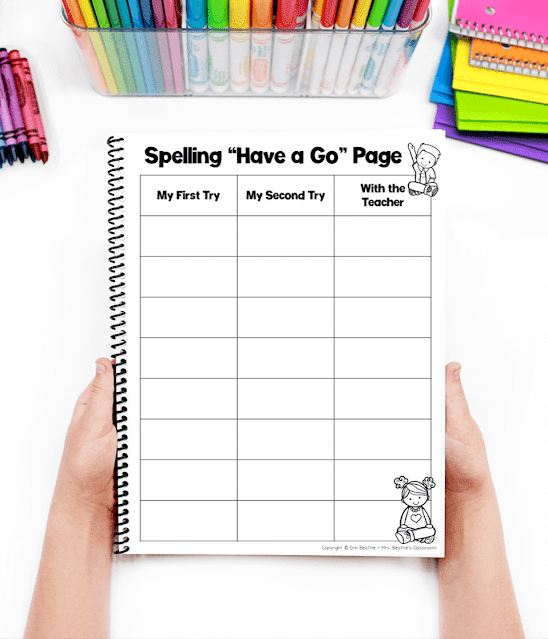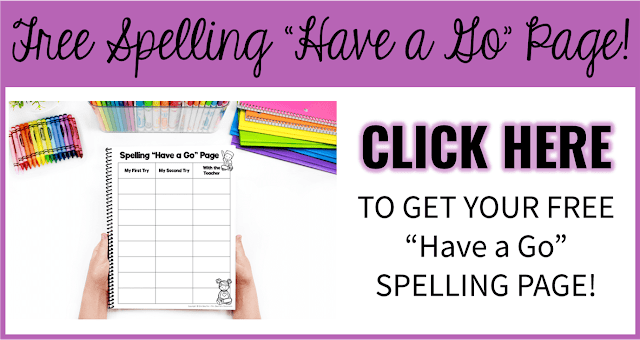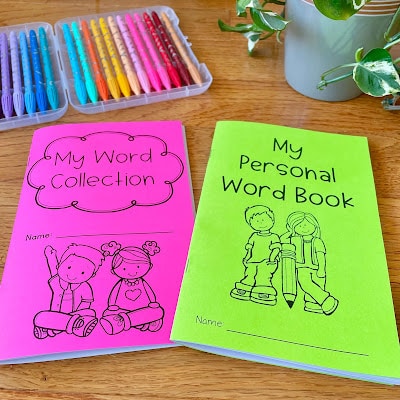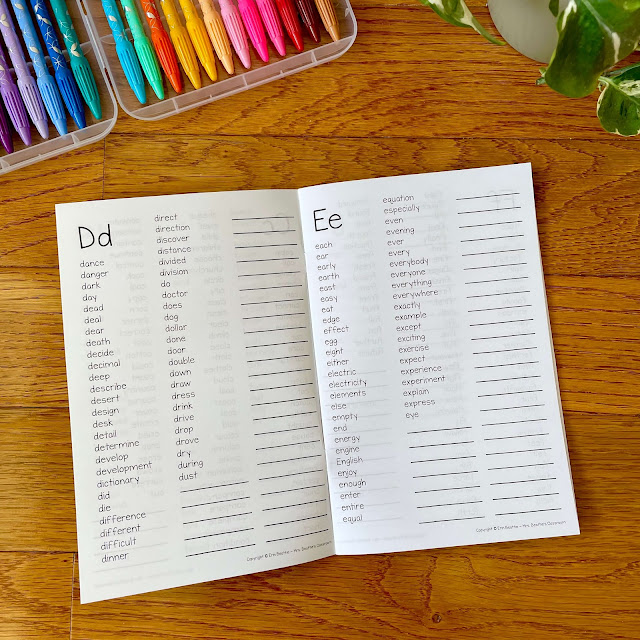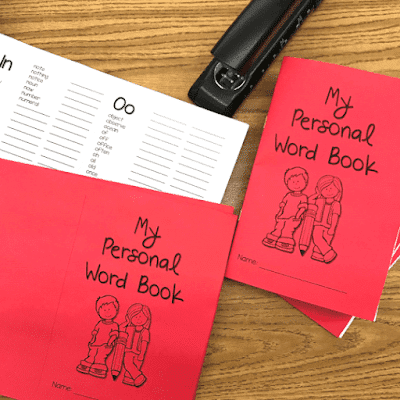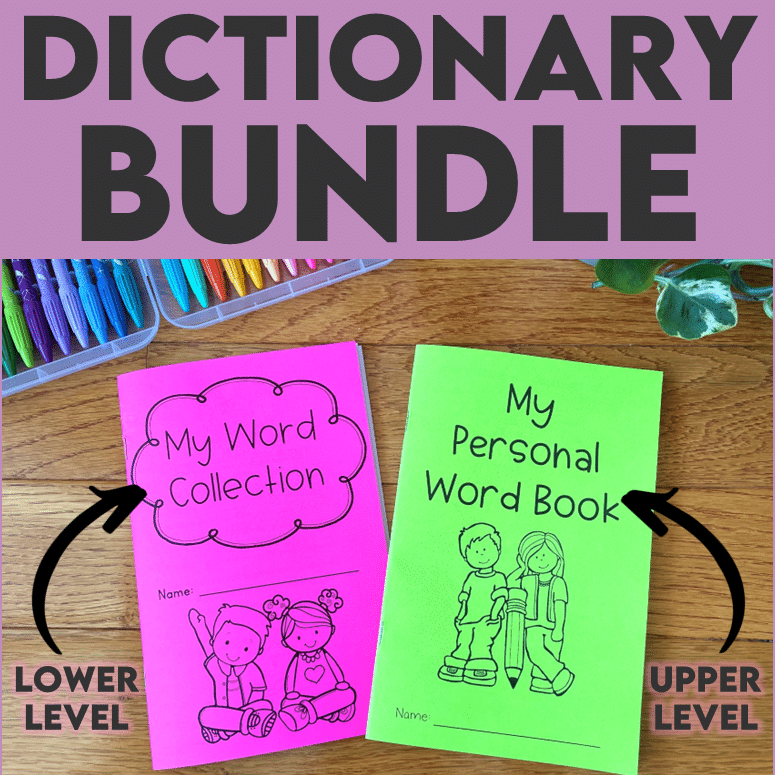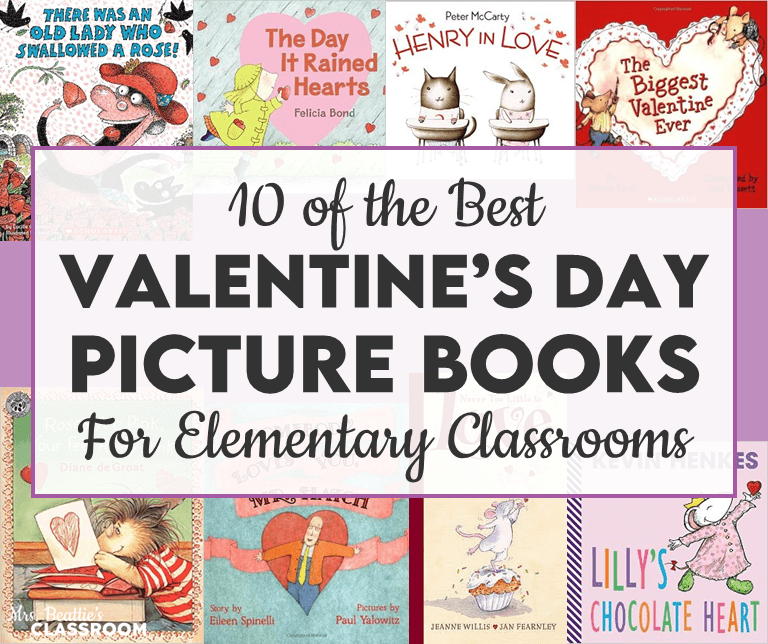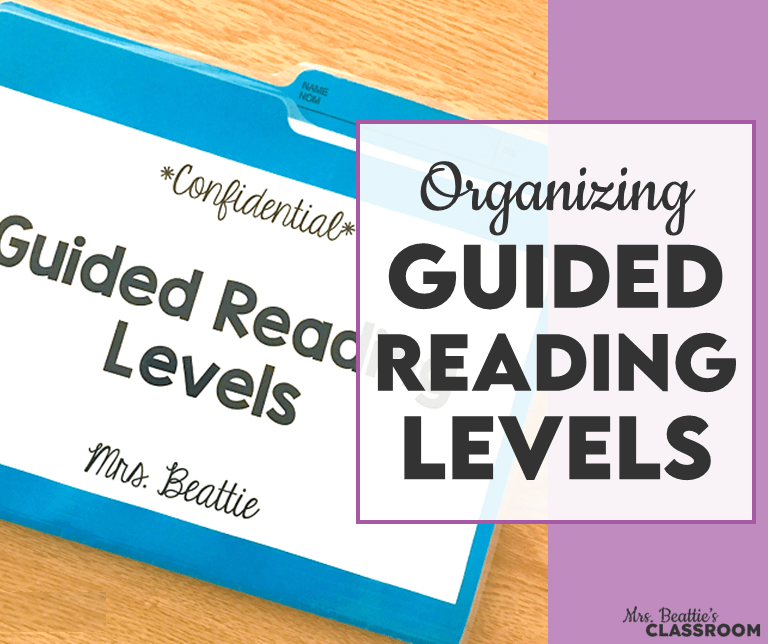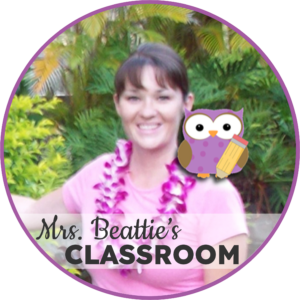Personal student dictionaries, or word books, are of great value in Grade 1-6 classrooms. When made a priority, these easy-to-use tools will help you grow your students’ skills while you differentiate with ease. Read on for 4 reasons to use personal student dictionaries in your classroom.
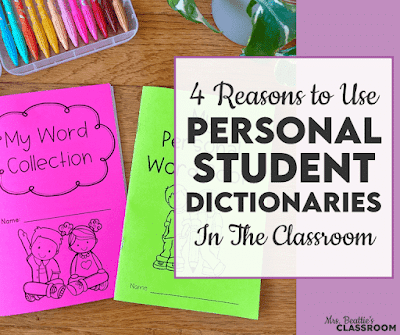
1. Student Dictionaries Encourage Independence
One of the top reasons I love using personal student dictionaries in my classroom is to improve my students’ independence.
Before I added this tool, I spent a good deal of the writing block moving from desk to desk, helping students spell words they really should have been able to manage on their own. Our word wall wasn’t meeting the needs of all of my students, and this took away from the time I had to conference with students about their work.
After providing my students with a word book of their own, I give them two directives during writing, depending on the stage of their writing process.
If they are drafting, I tell them to “GUM it” when they don’t know how to spell a word. GUM is an acronym for Guess, Underline, and Move on. I explain that correcting the spelling in a first draft isn’t essential, but it is important to use an approximation that will allow the writer to know the intent during the editing stage.
If students are working on their final writing draft, I direct them to their personal dictionary and the “right there” words around the classroom, such as the anchor charts we’ve created and used together.
If the word they require isn’t in the dictionary or available environmentally, this is an excellent opportunity to encourage students to remember the spelling skills and patterns they’ve learned. You can introduce a “Have a Go” page where they try spelling the unknown word independently and get some support before you give them the correct final spelling.
Grab a FREE “Have a Go” dictionary here:
2. Student Dictionaries Improve Performance
In my experience, using personal dictionaries in my classroom daily improves my students’ awareness of spelling patterns, alphabetical order, and errors in their work.
My students are excited to use their books to find the word they’re looking for or add it to one of the blank spaces when they don’t. I even had one of my Grade 6 students come to class with the personal dictionaries she’d received from me in Grades 2 and 3! She was so proud to have them still and pull them out during writing.
Since I don’t do traditional weekly spelling tests, my students know I want them to apply the word work and spelling skills I teach them in their daily writing. Face it, some students will never be exceptional spellers but can still succeed by learning how to edit and revise more thoroughly in the end stages of the writing process. For me, learning to use a tool like this one is as important as mastering the skill.
3. Student Dictionaries are Easily Differentiated
In every class I’ve taught, no matter the grade, I’ve had students with a wide range of abilities. Some students work at the earliest primary grade levels, and others work well beyond grade level.
Because of this, I’ve created and used two different student dictionaries in my classroom every year, but the casual observer or visitor would never know this. When my students pull out their word books, they all look the same on the outside. On the inside, however, I’ve distributed the student dictionaries based on my students’ needs.
The lower-level book includes all the Dolch and Fry sight words from the Pre-Primer to Third Grade lists and helpful number words.
The upper-level book includes the 1000 most commonly used words in the English language with extras like number words, contractions, and common abbreviations.
Both contain empty spaces for each alphabet letter where my students can add personally relevant words.
By using the same cover on both, I can discreetly support my students’ needs so no one feels different when they pull their book out to use.
4. Student Dictionaries are Easy to Use
When I created my personal dictionaries, I needed them to be easy to start with every year. The start of a new school year is busy enough without spending hours assembling books for each student.
I created these to allow me to print the entire book on just seven double-sided sheets of paper. When I print them and collate the pages as I go, it takes me just moments to separate each stack, fold, and staple.
That’s it. And for a resource we use every single day.
If you’re ready to start using student dictionaries in your classroom, check out this ready-to-go bundle with my lower—and upper-level books. While they are also available separately, having both levels will allow you to differentiate to better meet your students’ needs.
Click the image below to grab yours!
If you’ve enjoyed this post, please share it with friends and colleagues on Facebook or pin it on Pinterest:
